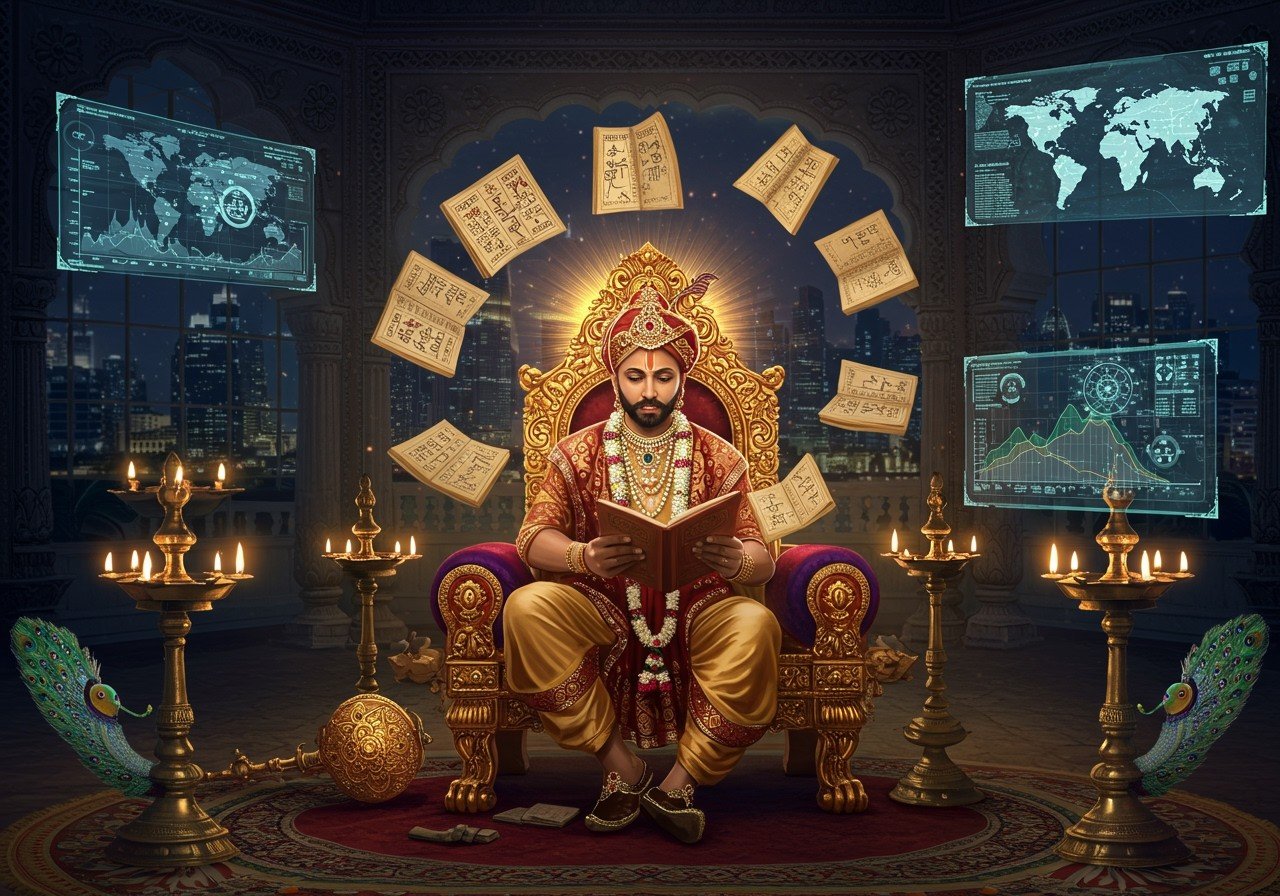
The Nitisara, a revered ancient Indian treatise on statecraft, offers profound insights into leadership, governance, and strategy. In 2025, its wisdom continues to resonate, providing valuable guidance for navigating the complexities of our times. This exploration delves into the Nitisara’s origins, content, and enduring relevance in today’s world, emphasizing its significance for those seeking effective leadership and strategic thinking. Understanding key concepts like statecraft and political philosophy is crucial for fully appreciating this timeless text. Immersing ourselves in the cultural and historical context of the Nitisara further enhances our understanding and appreciation.
Unveiling the Historical Roots of the Nitisara
Composed by Kamandaka, a scholar steeped in ancient Indian wisdom, the Nitisara builds upon the foundations laid by earlier texts like Kautilya’s Arthashastra (around 3rd century BCE). Kamandaka’s work reflects the socio-political landscape of his era, offering a glimpse into the intellectual ferment of ancient India. His profound contributions to political philosophy have left an indelible mark on Indian thought, influencing generations of scholars and leaders. Exploring the Nitisara’s origins allows us to connect with the rich tapestry of ancient Indian intellectual history and appreciate its enduring legacy.
Deciphering the Content and Structure of the Kamandaka Nitisara
The Nitisara delves into a wide array of topics essential for effective governance, including leadership, diplomacy, and the intricate art of administration. Kamandaka’s structured approach presents these complex ideas with clarity and precision. Remarkably, specific chapters address challenges that remain strikingly relevant even in the modern era. The Nitisara’s guidance on diplomacy and leadership, for instance, offers valuable insights for navigating today’s intricate political landscape. Its systematic presentation provides timeless advice applicable to leaders across diverse fields.
The Timeless Relevance of Nitisara in 2025
Even in 2025, the Nitisara’s principles shine brightly, offering a guiding light for governance and strategy. Its teachings possess a remarkable adaptability, proving their relevance amidst contemporary political and social complexities. Leaders and policymakers can draw upon its wisdom to address the multifaceted challenges of our times. The Nitisara, along with other ancient texts, is experiencing a resurgence, becoming a source of timeless wisdom for education and leadership training programs, shaping a new generation of leaders.
The Cultural Significance and Enduring Legacy of Nitisara
The Nitisara occupies a position of reverence in Indian tradition, serving as a custodian of ancient knowledge. It has profoundly influenced subsequent scholars and continues to enrich the tapestry of Indian literature and philosophy. This treatise stands as a testament to India’s intellectual heritage, offering valuable insights into statecraft to a global audience. For those deeply rooted in Indian culture and tradition, the Nitisara remains a source of profound wisdom and inspiration.
Modern Interpretations and Ongoing Scholarship
The Nitisara continues to captivate the minds of scholars who delve into its intricate themes and far-reaching implications. Recent academic inquiries shed light on its relevance to contemporary political theory. An interdisciplinary approach, encompassing perspectives from history, philosophy, and political science, enriches the study of this ancient text. Conferences and seminars dedicated to ancient Indian political philosophy provide platforms for ongoing exploration and discussion of the Nitisara’s enduring wisdom. You can find resources exploring Hindu philosophy here and Hindu symbols here. For a deeper dive into Hindu scriptures, visit this link.
Ancient Indian Political Philosophy: A Rich Tapestry of Thought
Ancient Indian political philosophy is a vast and intricate subject, deeply rooted in ancient scriptures and texts. It significantly influenced socio-religious systems across Asia, particularly Hindu, Buddhist, and Jain political philosophies. Let’s explore some key aspects:
Foundational Texts and Thinkers
- Arthashastra (c. 3rd century BCE): Attributed to Chanakya (Kautilya), this treatise delves into governance, statecraft, and political strategy. It emphasizes a strong state, with the ruler responsible for the people’s welfare, and outlines strategies for diplomacy, war, and economic management. It provides a comprehensive guide for rulers on maintaining order and prosperity within their kingdoms. The Arthashastra’s influence can be seen in various aspects of ancient Indian administration.
- Vedas and Brahmanas: These sacred texts discuss kingship in the Vedic Age and the roles of the priesthood in an aristocratic tribal polity. They shed light on the evolution of political thought during the formative period of Indian civilization. The Rigveda Samhita, in particular, marks the emergence of ancient Indian political philosophy, depicting a tribal culture where the king’s power was balanced by tribal councils like the sabha and samiti.
- Manusmriti: This text provides a thorough analysis of the justice system, exploring the intricacies of law and punishment in ancient India. It also delves into the various facets of a King’s life and responsibilities, offering a comprehensive guide to righteous rule and the maintenance of social order. Its influence on legal and social norms is significant.
- Mahabharata: This epic narrative is not just a story of war and dharma; it also mentions various schools of statecraft and lists prominent political theorists. The Shantiparva, a section within the epic, advocates a theory of punishment as a political tool, exploring the complexities of justice and governance. It’s a rich source for understanding different perspectives on political thought in ancient India.
- Panchatantra: This engaging collection of stories in Sanskrit prose imparts wisdom on statecraft, virtues, war, and polity. Through anthropomorphized animals, it teaches moral philosophy and political wisdom, making complex concepts accessible and engaging. The Panchatantra’s influence extends beyond India, with its stories translated and adapted across various cultures.
Key Concepts in Ancient Indian Political Thought
- Dharma: This central concept encompasses ethical and moral duties based on societal roles and responsibilities. It’s a cornerstone of maintaining social order, often associated with one’s caste, age, and social position. Understanding Dharma is fundamental to grasping the ethical framework of ancient Indian society. Its influence permeates various aspects of life, from individual conduct to governance.
- Rajadharma: This signifies the duty and morality specifically for rulers. It emphasizes just governance, ensuring the welfare of subjects, and upholding righteousness in the exercise of power. Rajadharma provides a framework for ethical leadership and responsible governance in ancient India. It highlights the importance of the ruler’s moral compass in shaping a just and prosperous society.
- Ahimsa: Non-violence, a central tenet of Shramanic traditions (Jainism and Buddhism), advocates for non-violence in thought, speech, and action. It promotes peaceful coexistence, compassion, and respect for all living beings. Ahimsa’s influence can be seen in various social and political movements throughout history.
- Dandaniti: This term refers to the science of criminal justice and the administration of punishment. It explores the principles of maintaining law and order within a state. Dandaniti played a crucial role in shaping legal systems and ensuring social stability.
These core concepts offer a deeper understanding of the values and principles that shaped ancient Indian political thought. For further insights into ancient Indian architecture and its underlying principles, you can explore Vastu Shastra here.
Poojn.in: Your Companion in Exploring Ancient Wisdom
At Poojn.in, we understand the reverence for tradition and the desire to connect with our rich cultural heritage. As India’s leading provider of cultural goods and services, we offer a wide range of items to support your exploration of ancient texts like the Nitisara. From pure brass study lamps that illuminate your study space with a warm, inviting glow to traditional wooden book rests (path peeth) that provide comfort and support during your reading, we have curated a collection to enhance your scholarly pursuits. You can also find natural incense, copper water vessels, pure cotton asanas, and a variety of dhoop and agarbatti to create a serene and conducive environment for your studies. Browse our extensive collection of Pooja Samagri and discover everything you need to deepen your connection with ancient wisdom.
Visit www.poojn.in to explore our complete range of traditional and scholarly items. All products are quality-checked and shipped across India with secure packaging.


